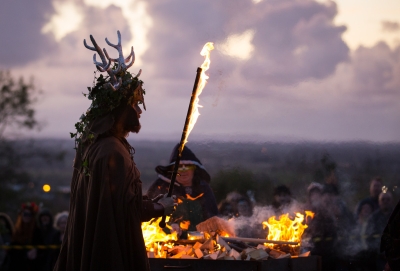
Halloween has its roots in the festival of Samhain that was celebrated by the Celts on November 1st. On the night of October 31st, the Celts believed the ghosts of the dead returned to Earth. They dressed up in costumes to ward off these spirits and built bonfires and made animal sacrifices in homage to their Celtic deities.
After conquering Celtic lands, Romans merged some of the traditions of Samhain into their festivals of Feralia and Pomona. The game of bobbing for apples originated from traditions of the Festival of Pomona.
In the eighth century, Pope Gregory III designated November 1st as All Souls Day, which incorporated practices of Samhain. The day before All Souls Day was known as All Hallows Eve, which later was changed to Halloween.
Halloween was brought to the United States in the 19th century by Irish immigrants that were escaping The Potato Famine. Americans took notice of the holiday and began celebrating it themselves. Today, Halloween is the second largest commercial holiday in the U.S. in which Americans spend an estimated six billion annually.
To learn more about the traditions of Halloween, please visit the Library of Congress blog page. The traditions of trick-or-treating, carving pumpkins, and candy corn are described on this page.
Michael Walsh is an Adult Services Librarian at the Will Library. He is currently reading Hearts in Atlantis by Stephen King